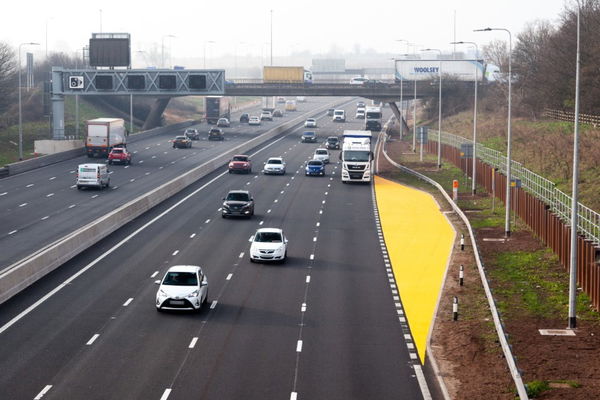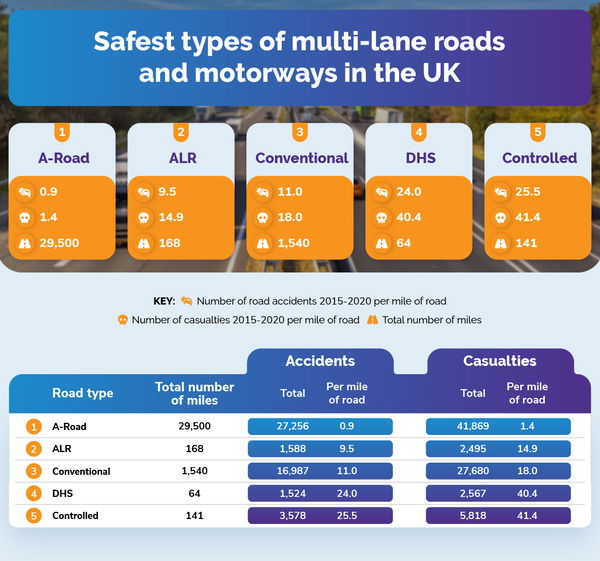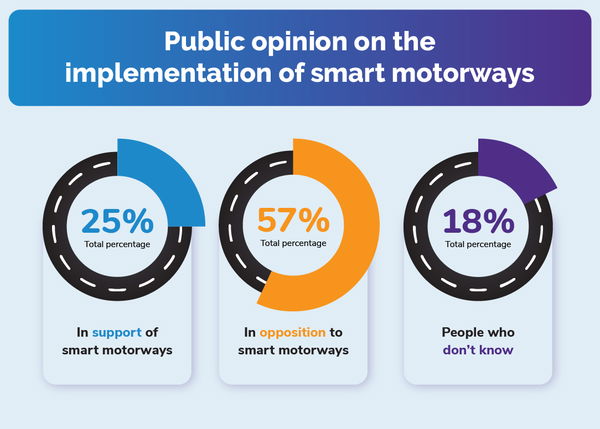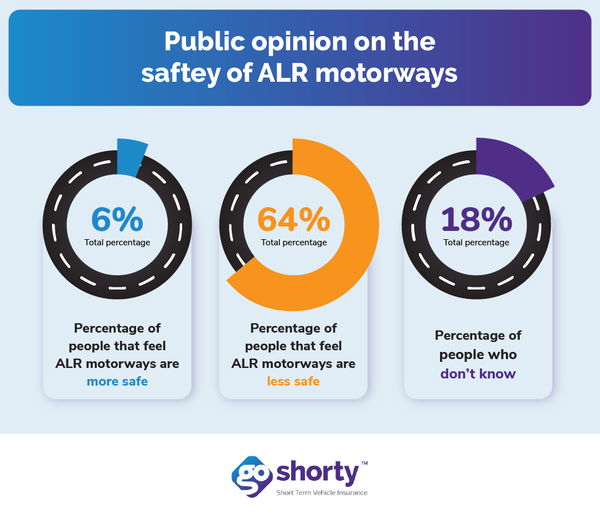Research suggests smart motorways are safer than conventional ones
Findings from new research published by insurance company GoShorty suggests that new smart motorways are safer than conventional ones.

Findings of newly-published research show that ‘all-lane running’ motorways are the second-safest multi-lane road type in the UK, but that the overwhelming public opinion is that smart motorways are unsafe.
The research, conducted by the insurance company GoShorty, compared five types of multi-lane roads in the UK: A-road; All-Lane Running (ALR); Conventional motorways; Dynamic Hard Shoulder (DHS); and Controlled. It looked at the period between 2015 and 2020.

The research found that, between 2015 and 2020, A-roads had the lowest number of accidents (0.9) per mile and the lowest number of casualties (1.4) per mile.
While ALR ranked second in the research, these roads were also proven to be significantly more dangerous than A-roads. There were 9.5 accidents per mile of ALR road, and 14.9 casualties per mile. The published research by GoShorty notes that A-roads “are also much narrower and less busy compared to a conventional motorway.”

Additionally, Conventional motorways had 11 accidents and 18 casualties per mile; DHS motorways had 24 accidents and 40.4 casualties per mile; and Controlled motorways had 25.5 accidents and 41.4 casualties per mile.

For traffic, the research looked only at smart motorways (i.e. ALR, DHS, and Controlled). Of these, ALR motorways were ranked generally the lowest, with four of the five most traffic-free motorways being “All-Lane Running” type. The third-ranked motorway for traffic was a Controlled motorway, between J23a-24 on the M1. Compared to the top-ranked motorway, this Controlled section had three-times as much traffic, but also half as much as the fifth-ranked motorway, which was the ALR section of the M1 between J24-25.
The M1 also features the second-longest stretch of smart motorway, with 20.1 miles of ALR between J28-31. The M25, meanwhile, has three of the five longest smart motorway stretches, with 22.1 miles of Controlled between J16-23, 19.3 miles of ALR between J10-16, and 16.3 miles of Controlled between J7-10.

GoShorty also looked at a YouGov poll from 2021 surveying people’s opinions on smart motorways and gauging support for them.
The poll found that 25% of people support the implementation of smart motorways, and 18% of people were unsure. But 57% of people were opposed to their implementation.

On ALR motorways specifically, only six per cent of people felt they are more safe than conventional motorways. Again, 18% were unsure whether they were safer or not, but 64% of people felt that ALR motorways are less safe than conventional motorways.
“Seemingly, the majority of people would be much more content to remain using motorways with a dedicated hard shoulder lane,” GoShorty says.
The evidence presented by GoShorty shows that the newest type of smart motorway, ALR, are the best in terms of reducing congestion. However, it also shows that they are less safe than conventional A-roads, and while the number of accidents and casualties per mile on ALR motorways are both fewer than on conventional motorways, there are also 9.2-times as many miles of conventional motorway (1,540 miles) than ALR motorway (168 miles).
It certainly seems that ALR motorways are more effective than DHS motorways, but the public concern about their safety relates also to the distance between emergency refuge areas. These are currently spaced at 1.55 miles, and although that distance is set to be reduced to 0.93 miles or even 0.62 miles, according to GoShorty, until that change is implemented in reality it is hard to expect the public to change their opinion on smart motorways which, as the study shows, is that the implementation of more should not happen because they are unsafe.
The full research publication from GoShorty can be found here.











